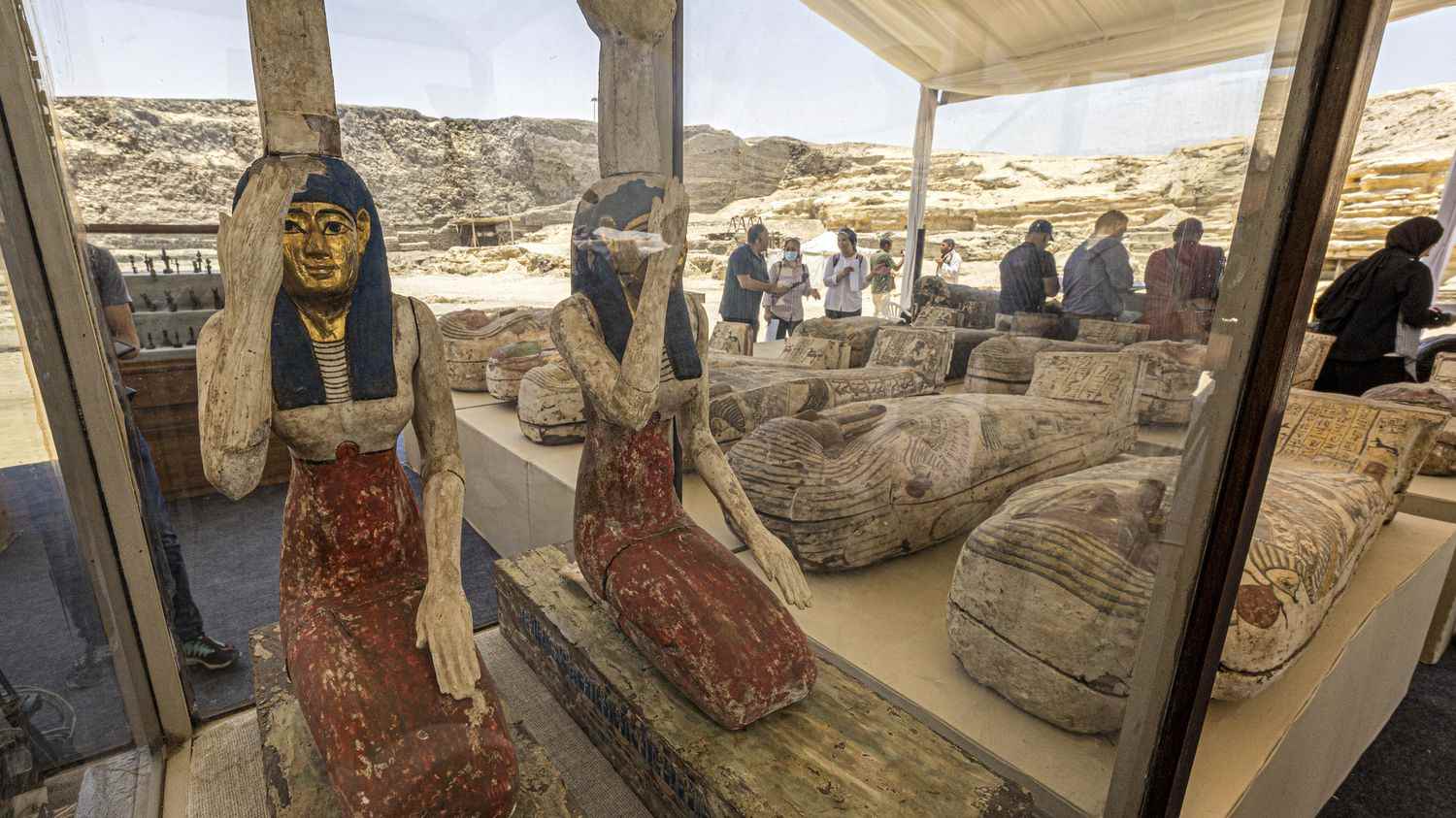Egypt on Monday unveiled the discovery of a cache containing 250 sarcophagi and 150 bronze statues in the Saqqara necropolis south of Cairo, the latest in a series of landmark discoveries in the region.
The site of Saqqara, just over 15 kilometers south of the famous pyramids of the Giza Plateau, is a UNESCO World Heritage Site and is known for the famous step pyramid of Pharaoh Djoser. This monument, built around 2700 BC by the architect Imhotep, is considered one of the oldest on the surface of the globe.

Among the 150 statues discovered in the cache is one of the architect, also vizier and doctor. Inventor of cut stone construction, Imhotep – who was deified – has “revolutionized architecture” in the ancient world, Mostafa Waziri, director of the Supreme Council of Antiquities, told reporters on Monday.

“Find Imhotep’s Tomb” is one of the main objectives of the archaeological mission which has already undertaken four seasons of excavations on the site, added Mostafa Waziri. Besides the statue of Imhotep, others in bronze representing the deities of the Egyptian pantheon “Osiris, Isis, Hathor, Amon-Min, Nefertum and Anubis” have been unearthed, the Ministry of Tourism and Antiquities said in a statement.

And “250 wooden sarcophagi containing mummies” dating from the 5th century BC, were also discovered, added the Director of the Supreme Council of Antiquities. In one of them, a papyrus “intact” and “sealed“found by archaeologists was immediately transferred to the laboratory of the Egyptian Museum in Tahrir Square, Cairo, for restoration and analysis. Estimated to be nine meters long, it certainly contains chapters from the Book of the Dead, according to the director.

Mostafa Waziri indicated that the sarcophagi would be moved to the new “Great Egyptian Museum”near the Giza Plateau, which Egyptian authorities hope to inaugurate this year after multiple delays.
In January 2021, Egypt had already unveiled new “treasures“archaeological finds at Saqqara, including some 50 New Kingdom sarcophagi over 3,000 years old, authorities claiming they allowed”rewrite history“of this period.
Cairo is counting on these new discoveries to revive tourism, hit hard by the Covid-19. This sector, which employs two million people and generates more than 10% of GDP, has been at half mast since the Arab Spring in 2011.
